Like most of us, Jay Hegemann deletes a lot of emails every day. Everything from miracle cures for baldness to special offers from credit card vendors go right into the trash. However, something about the email from Keyence’s sales engineer earlier this spring caught Hegemann’s eye and he decided to take another look. It’s a good thing, because the product advertised in that message has been a game changer for this small manufacturing firm.
“You usually read one sentence and hit the delete button, but then I saw a little picture of the Keyence XM and it got my attention,” he says. “It was interesting enough for me to say, ‘Yeah, I’ll actually take time out of my day to look at this thing,’ so I gave our system specialist a call. I’m glad I did.”
Hegemann is the president of Flying J Machine, an Escondido, Calif., machine shop and specialty manufacturing company. He’s been in business since 2000, has nine employees, nearly 8,000 sq. ft. of floor space, and a variety of modern equipment. This includes several Haas CNC machining centers and lathes, a Mitsubishi wire EDM, laser cutting equipment, and a small hole EDM machine. Much of his work is oceanographic in nature—instruments that measure water properties, mostly—but Flying J also has customers in the semiconductor, communications, and defense industries.
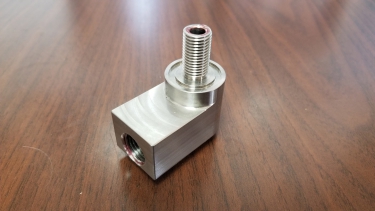
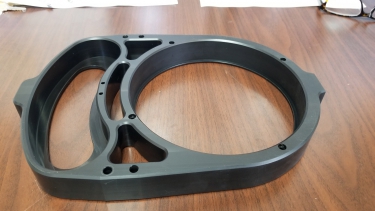
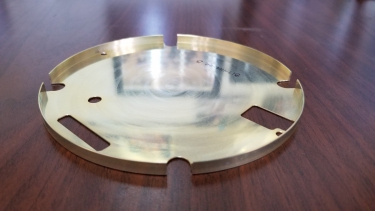
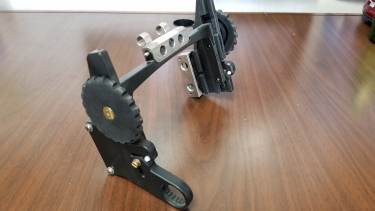
Some of the parts Flying J Machine produces. Photos courtesy of Flying J Machine
Hegemann is self-taught. While working in his father’s small product development company during his early twenties, Hegemann convinced him to buy a CNC knee mill. Over the next 6 months, he read the manual and began making prototypes for his father. When a local business asked him to machine some parts, Hegemann jumped at the prospect. Since then he’s gone off on his own, continuing to add capabilities to his growing company, even though he’s often had to stay up all night learning a new skill or mastering a machine tool.
Like most machine shops, Flying J has a coordinate measuring machine, and as Hegemann explains, there’s usually one guy that knows how to run it. “It uses PC-DMIS, which requires a fair amount of training to learn. So you send
someone out to class, thinking they’ll train everyone else when they get back, but then that person quits, or he does train other people but they use it so seldom that they forget. Unless you have a large shop where it’s being used all the time, I think most CMMs end up like mine—expensive dust collectors.”
Hegemann says he wanted a piece of measuring equipment that anyone could walk up and use, without the need for complicated programming and extensive training. So when Keyence’s local XM specialist brought the system in for a demonstration, Hegemann knew a good thing when he saw it. “The writing was on thewall,” he says. “The XM is fast, accurate and easy to use. I ordered one that day.”
The Keyence XM series CMM is small enough to fit on a bench, but thanks to its movable stage and handheld probe, it can even measure large and complex parts. It has a simple user interface with an extensive, but easy to understand list of measurement options. Tools such as lines, points, circles, and planes are displayed on the screen, walking the user through the measuring process while providing GD&T functionality, virtual figures, statistics and trend analyses, deviation display and other advanced features.
Hegemann says the XM is simple enough to use that they skipped the offered training and got right to work—everyone in the shop has since been able to check their own parts with just a few minutes of instruction. “It’s so much better than our CMM,” he says. “You just walk up, click on the appropriate icon, and you measure a bore, distance between holes, flatness, whatever. I can’t really say how much time it saves, because it’s more a case of something that is actually being used compared to something that’s not being used.”
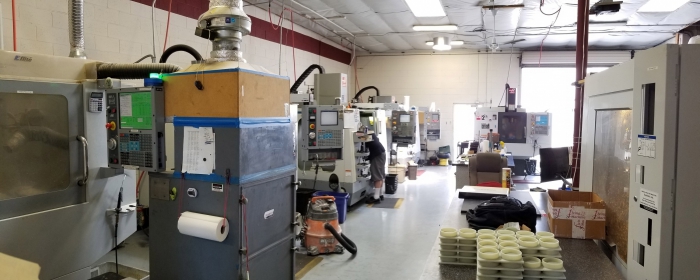
Flying J Machine has grown to 14 CNC machines and nine employees in its short history.
To those who might be skeptical of the handheld probe (as was Hegemann, initially), he says the XM is incredibly accurate. “I wasn’t sure at first, so I grabbed a 1.4375-inch ring gauge, which is ground to within 50 millionths (0.000050 in.), and started checking. Every time I measured it, the Keyence XM was within a tenth (0.0001 in.) of what it was supposed to be. You don’t have to be super careful, you just hold the probe to the surface, apply a little pressure, hit the button and move on to the next point. It’s the real deal.”
Related Glossary Terms
- centers
centers
Cone-shaped pins that support a workpiece by one or two ends during machining. The centers fit into holes drilled in the workpiece ends. Centers that turn with the workpiece are called “live” centers; those that do not are called “dead” centers.
- computer numerical control ( CNC)
computer numerical control ( CNC)
Microprocessor-based controller dedicated to a machine tool that permits the creation or modification of parts. Programmed numerical control activates the machine’s servos and spindle drives and controls the various machining operations. See DNC, direct numerical control; NC, numerical control.
- electrical-discharge machining ( EDM)
electrical-discharge machining ( EDM)
Process that vaporizes conductive materials by controlled application of pulsed electrical current that flows between a workpiece and electrode (tool) in a dielectric fluid. Permits machining shapes to tight accuracies without the internal stresses conventional machining often generates. Useful in diemaking.
- milling machine ( mill)
milling machine ( mill)
Runs endmills and arbor-mounted milling cutters. Features include a head with a spindle that drives the cutters; a column, knee and table that provide motion in the three Cartesian axes; and a base that supports the components and houses the cutting-fluid pump and reservoir. The work is mounted on the table and fed into the rotating cutter or endmill to accomplish the milling steps; vertical milling machines also feed endmills into the work by means of a spindle-mounted quill. Models range from small manual machines to big bed-type and duplex mills. All take one of three basic forms: vertical, horizontal or convertible horizontal/vertical. Vertical machines may be knee-type (the table is mounted on a knee that can be elevated) or bed-type (the table is securely supported and only moves horizontally). In general, horizontal machines are bigger and more powerful, while vertical machines are lighter but more versatile and easier to set up and operate.
- sawing machine ( saw)
sawing machine ( saw)
Machine designed to use a serrated-tooth blade to cut metal or other material. Comes in a wide variety of styles but takes one of four basic forms: hacksaw (a simple, rugged machine that uses a reciprocating motion to part metal or other material); cold or circular saw (powers a circular blade that cuts structural materials); bandsaw (runs an endless band; the two basic types are cutoff and contour band machines, which cut intricate contours and shapes); and abrasive cutoff saw (similar in appearance to the cold saw, but uses an abrasive disc that rotates at high speeds rather than a blade with serrated teeth).
- wire EDM
wire EDM
Process similar to ram electrical-discharge machining except a small-diameter copper or brass wire is used as a traveling electrode. Usually used in conjunction with a CNC and only works when a part is to be cut completely through. A common analogy is wire electrical-discharge machining is like an ultraprecise, electrical, contour-sawing operation.

